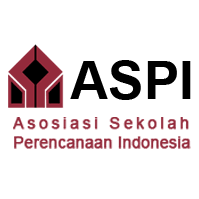KAJIAN TINGKAT WALKABILITY JALUR PEJALAN KAKI DI KAWASAN CBD BINTARO JAYA, KOTA TANGERANG SELATAN
DOI:
https://doi.org/10.21776/ub.takoda.2022.014.02.9Keywords:
Pedestrian Paths, Walkability,Abstract
Walkability is carried out to measure the feasibility of the pedestrian path in the Bintaro Jaya CBD Area, South Tangerang City. According to the RTRW of South Tangerang City in 2011-2031, the Bintaro Jaya CBD area is a strategic area from the point of view of the importance of economic growth and in providing pedestrian paths, it considers aspects of safety, comfort, and security as well as taking into account pedestrian paths with special needs. In the existing condition, it has not been implemented according to the RTRW of South Tangerang City in 2011-2031, namely there are still infrastructure and facilities for pedestrian paths and pedestrian paths with special needs that are uneven, as well as side obstacles and damage to pedestrian paths. The aim of this study is to determine the level of walkability of pedestrian paths in the CBD area of Bintaro Jaya and the type of study is quantitative with the method of analyzing the level of walkability of pedestrian paths using 9 parameters based on Leather et all in 2011. The results of the walkability level analysis show that the lowest walkability score is in segment 3A with a value of 37.0 or not walkable and the highest walkability score is in segment 5A with a value of 74.2 or highly walkable, while the walkability score for one area is 51.7 or waiting to walk.
Keywords: Pedestrian Paths, Walkability, Bintaro Jaya CBD Area.
References
Agustin, I. W. (2017). Penerapan Konsep Walkability Di Kawasan Alun-Alun Kota Malang. Jurnal Pengembangan Kota, 5(1), 45. Malang: Brawijaya University.
Krambeck, H. (2006). The Global Walkability Index. Massachussets: Massachussets Institute of Technology.
Leather, J., Fabian, H., Gota, S., & Mejia, A. (2011). Walkability and Pedestrian Facilities in Asian Cities State and Issues. Philippines: Asian Development Bank Sustainable Development Working Paper Series.
Nugroho, R. A., & Rusnabilah, A. (2021). Nilai Index Walkability Jalur Pejalan Kaki Di Kawasan Perdagangan Dan Jasa Kota Samarinda. Reksabumi.
RTRW Kota Tangerang Selatan Tahun 2011-2031. Tangerang Selatan Regulation 15/2011.
Tanan, N. (2011). Fasilitas Pejalan Kaki. Journal of Chemical Information and Modeling, 53(9), 1689–1699. Bandung: Kementerian Pekerjaan Umum, Pusat Penelitian dan Pengembangan Jalan dan Jembatan.
Tanan, N., Wibowo, S. S., & Tinumbia, N. (2017). P Pengukuran Walkability Index pada Ruas Jalan di Kawasan Perkotaan. Jurnal Jalan-Jembatan, 34(2), 115–127. Institut Teknologi Bandung, Puslitbang Jalan dan Jembatan, Universitas Pancasila.
Tiffandira, A., & Safitri, R. (2018). Pengaruh Fasilitas Dan Desain Jalur Pejalan Kaki Terhadap Minat Berjalan Kaki Masyarakat pada Kawasan Central Business District (CBD) Bintaro Jaya. Tangerang Selatan: Universitas Pembangunan Jaya.
Downloads
Published
How to Cite
Issue
Section
License
Copyright (c) 2023 wisnu sasongko

This work is licensed under a Creative Commons Attribution 4.0 International License.
Authors who publish with this journal agree to the following terms:
- Authors retain copyright and grant the journal right of first publication with the work simultaneously licensed under a Creative Commons Attribution License that allows others to share the work with an acknowledgement of the work's authorship and initial publication in this journal.
- Authors are able to enter into separate, additional contractual arrangements for the non-exclusive distribution of the journal's published version of the work (e.g., post it to an institutional repository or publish it in a book), with an acknowledgement of its initial publication in this journal.
- Authors are permitted and encouraged to post their work online (e.g., in institutional repositories or on their website) prior to and during the submission process, as it can lead to productive exchanges, as well as earlier and greater citation of published work (See The Effect of Open Access).



















